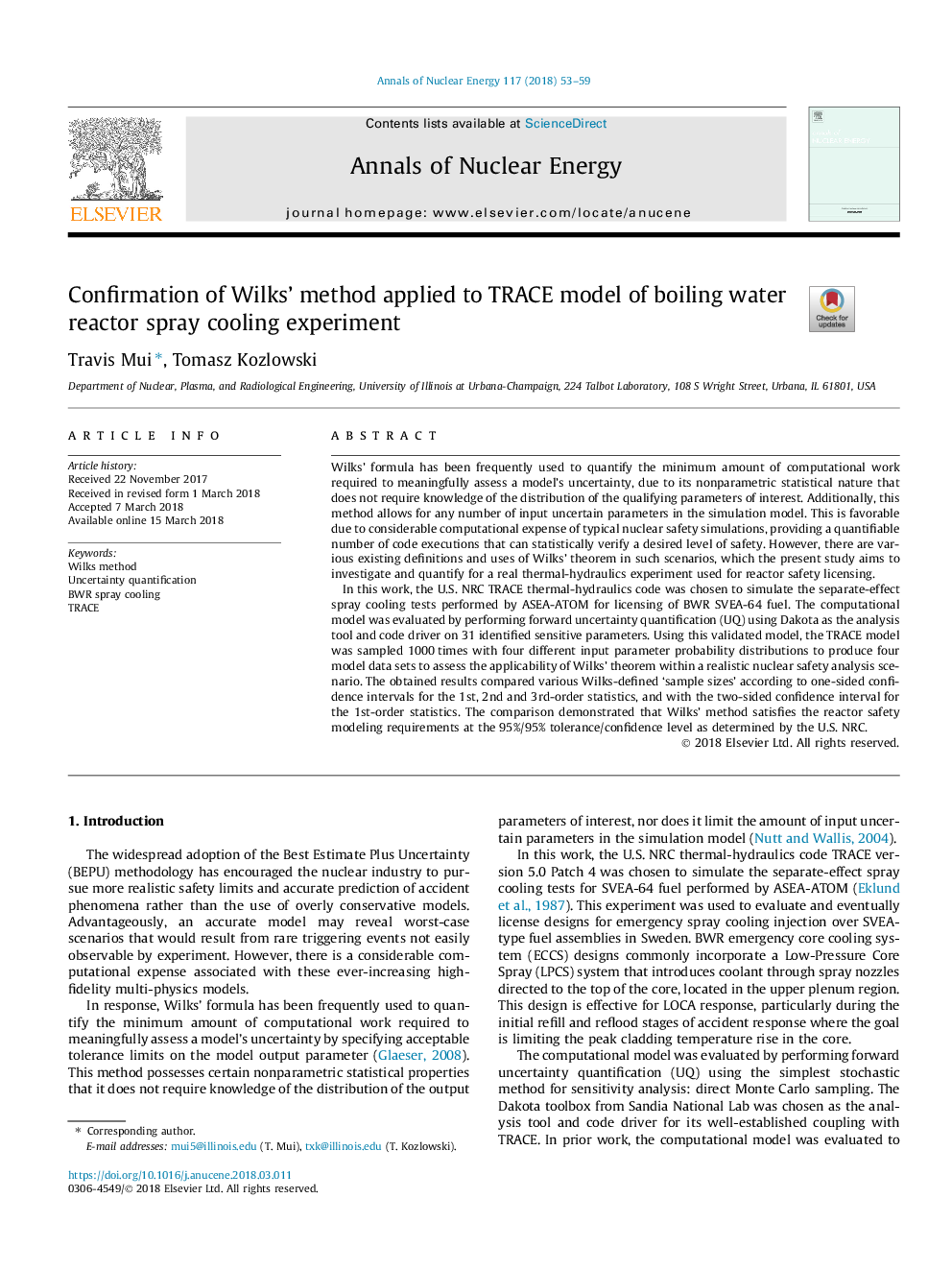| Article ID | Journal | Published Year | Pages | File Type |
|---|---|---|---|---|
| 8066980 | Annals of Nuclear Energy | 2018 | 7 Pages |
Abstract
In this work, the U.S. NRC TRACE thermal-hydraulics code was chosen to simulate the separate-effect spray cooling tests performed by ASEA-ATOM for licensing of BWR SVEA-64 fuel. The computational model was evaluated by performing forward uncertainty quantification (UQ) using Dakota as the analysis tool and code driver on 31 identified sensitive parameters. Using this validated model, the TRACE model was sampled 1000â¯times with four different input parameter probability distributions to produce four model data sets to assess the applicability of Wilks' theorem within a realistic nuclear safety analysis scenario. The obtained results compared various Wilks-defined 'sample sizes' according to one-sided confidence intervals for the 1st, 2nd and 3rd-order statistics, and with the two-sided confidence interval for the 1st-order statistics. The comparison demonstrated that Wilks' method satisfies the reactor safety modeling requirements at the 95%/95% tolerance/confidence level as determined by the U.S. NRC.
Keywords
Related Topics
Physical Sciences and Engineering
Energy
Energy Engineering and Power Technology
Authors
Travis Mui, Tomasz Kozlowski,
